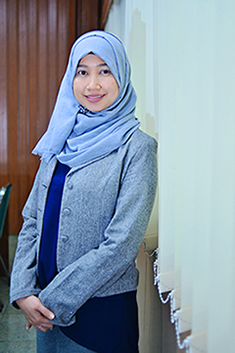Phytochemical Screening and Antibacterial Test of Streptococcus mutans Using Extracts of Five Piperaceae Species
Downloads
Background: The Piper genus has 700 species distributed around the world, which have many benefits as traditional medicines. Some of them are red betel, Javanese chili, Chinese betel, green betel, and forest betel, which are included in the Piperaceae family. One of the biggest threats to public health and global development is antimicrobial resistance. Objective: Therefore, the aim of this study was to conduct phytochemical screening of extracts from five piperaceae species as natural antibiotics for the antibacterial test of Sterptococcus mutans. Methods: The extraction method used was UAE (ultrasound-assisted extraction) with three solvents of different polarity, namely n-hexane, ethyl acetate and ethanol. MIC (minimum inhibitory concentration) and DDH (diameter of inhibition) tests were conducted by solid agar dilution method, and paper disc diffusion method. Results: The results of MIC testing of the five piperaceae species show that the best extracts, which have the smallest MIC value, are forest betel leaf extract, namely 5% n-Hexane and red betel leaf extract, namely n-Hexane and 5% ethyl acetate. The results of DDH testing of the five piperaceae species show that the best extract that has the greatest DDH value is green betel leaf extract with ethyl acetate solvent, DDH value of 23.26 mm ± 0.21 included in the Susceptible category. Conclusion: The results can be concluded that the best extract is green betel leaf extract with ethyl acetate solvent, DDH value of 23.26 mm ± 0.21 against Streptococcus mutans included in the Susceptible category.
Anugrahwati, M., Purwaningsih, T., Rustina, Manggalarini, J. A., Alnavis, N. B., Wulandari, D. N., & Pranowo, H. D. (2016). Extraction of Ethanolic Extract of Red Betel Leaves and Its Cytotoxicity Test on HeLa Cells. Procedia Engineering; 148; 1402–1407. doi: 10.1016/j.proeng.2016.06.569.
Aviany, H. B., & Pujiyanto, S. (2020). Analysis of the Effectiveness of Probiotics in Beauty Products as Antibacterials against Staphylococcus epidermidis. Periodical Journal of Biotechnology; 3; 24–31.
Azizah, R., & Antarti, A. N. (2019). Test of the Antibacterial Activity of Extracts and Latex of the Stem and Stem of Yellow Kepok Banana (Musa paradisiaca Linn.) Against the Bacteria Pseudomonas aeruginosa and Klebsiella pneumoniae using the Agar Diffusion Method. JPSCR: Journal of Pharmaceutical Science and Clinical Research; 4; 29. doi: 10.20961/jpscr.v4i1.26544.
Damayanti, R., & Ervilita, R. (2019). Phytochemical Screening of Ethanol, Ethyl Acetate and N-Hexane Extracts of Myristica Fragrans Stems. Talenta Conference Series: Science and Technology (ST); 2; 97–100. doi: 10.32734/st.v2i1.323.
Dewatisari, W. F. (2020). Comparison of Chloroform and Ethanol Solvents for Soaking Extract of Mother-in-law's Tongue (Sansevieria trifasciata prain.) Leaves Using the Maceration Method. Journal of Biology, Faculty of Science and Technology; 128–132.
Fahdi, F. (2018). Test of the Antibacterial Activity of Green Betel Leaf Extract (Piper betle L) Against Staphylococus aureus and Escherichia coli Bacteria in 2018. Public Health Community Journal Stikes Deli Husada Delitua; 11; 42-51.
Fitriana, Y. A. N., Fatimah, V. A. N., & Fitri, A. S. (2020). Anti-Bacterial Activity of Betel Leaves: MIC (Minimum Inhibitory Concentration) and KBM (Minimum Bactericidal Concentration) Extract Test. Saintex; 16; 101–108. doi: 10.30595/st.v16i2.7126.
Hanani, E., 2016. Phytochemical Analysis. Jakarta: EGC Medical Book.
Handayany, G. N., & Fany, F. (2018). Sensitivity and Resistance Testing of Streptococcus mutans Bacteria that Cause Dental Caries to Several Antibiotics Invitro at the Haji Makassar Regional General Hospital (RSUD). Journal of the Indonesian Pharmacists Association; 521; 521–529.
He, S. P. S., Nurjanah, N., & Jacoeb, A. (2015). Chemical Composition and Antioxidant Activity of Lindur Roots, Bark and Leaves. Journal of Indonesian Fishery Products Processing; 18; 205-219.
Hendra R., Ahmad S., Sukari A., Shukor M. Y., & Oskoueian, E.(2011). Flavonoid Analyzes and Antimicrobial Activity of Various Parts of Phaleria macrocarpa (Scheff) Boerl Fruit. International Journal Mol Science; XII; 3422-3431.
Kowalska-Krochmal, B., & Dudek-Wicher, R. (2021). The Minimum Inhibitory Concentration of Antibiotics: Methods, Interpretation, Clinical Relevance. Pathogens; 10; 1–21. doi: 10.3390/pathogens10020165.
Musthapa, I., & Gumilar, G. G. (2016). Isolation of Piperine From the Fruit of Piper retrofractum. Indonesian Journal of Fundamental and Applied Chemistry; 2; 6–9. doi: 10.24845/ijfac.v2.i1.06.
Nascimento, J. C. D., Paula, V. F. D., David, J. M., & David, J. P. (2012). Occurrence, Biological Activities and 13C NMR Data of Amides from Piper (Piperaceae). Química Nova; 35; 2288–2311.
Ndumuye, E., M., T., Langi, & Taroreh, M. I. R. (2021). Chemical Characteristics of Load Flour (Pteridophyta filicinae) as Traditional Food For The Community Of Kimaam Island. Jurnal Agroekoteknologi Terapan; 3; 261–268.
Nouri, L., Nafchi, A. M., and Karim, A. A. (2014). Phytochemical Antioxidant Antibacterial, and α-amylase Inhibitory Properties of Different Extracts from Betel Leaves. Industrial Crops and Product; 62; 47-52.
Novita, W. (2016). Test of The Antibacterial Activity of Green Betel Leaf Fractions (Piper betle L) Against the Growth of Streptococcus Mutans Bacteria In Vitro. Jambi Medical Journal; 4; 141-155.
Rachmawaty, F. J., Citra, D. A., Nirwani, B., Nurmasitoh, T., & Tri Bowo, E. (2009). Benefits of Red Betel (Piper crocatum) as an Anti-Bacterial Agent against Gram Positive Bacteria and Gram Negative Bacteria. Indonesian Journal of Medicine and Health; 1; 12–20. doi: 10.20885/jkki.vol1.iss1.art3.
Rahmawati. (2014). Interaction of Aloe Vera Leaf Extract (Aloe vera L.) and Betel Leaf (Piper betle L.) on the Inhibitory Power of Staphylococcus aureus in vitro. Tropical EduBio Journal; 2; 121- 186.
Rasydy, L. O. A., Supriyanta, J., & Novita, D. (2019). Formulation of 96% Ethanol Extract of Green Betel Leaves (Piper betle L.) in Anti-Acne Loose Powder and Anti-Acne Activity Test Against Staphylococcus aureus. Farmagazine Journal; 6; 18-26.
Safriana, N., Lambui, O., & Ramadanil. (2019). Test of the Inhibitory Power of Forest Betel Leaf Extract (Piper aduncum L.) on the Growth of Streptococcus mutans Bacteria. Journal of Chemical Information and Modeling; 13; 46-55.
Sari, R., Muhani, M., & Fajriaty, I. (2018). Test the Antibacterial Activity of Ethanol Extract of Agarwood Leaves (Aquilaria microcarpa Baill.) against Staphylococcus aureus and Proteus mirabilis Bacteria. Pharmaceutic Science and Research (PSR); 4; 143-154.
Setyaningrum, M. (2017). Identification of Active Compounds and Bio-toxicity of n-hexane, Ethyl Acetate and ethanol Extracts of Tetraselmis chuii Microalgae by Brine Shrimp Lethality Test (BSLT). Indonesian Journal of Industrial Research; 34; 8-17.
Suciati, A., Wardiyanto & Sumino. (2012). Effectiveness of Rhizopora mueronata leaf extract in inhibiting the growth of Aeromonas salmonicida and Vibrio harvey bacteria. Journal of aquaculture engineering and technology. Lampung: Unila; 5; 112-116.
Suri, M. A., Azizah, Z., & Asra, R. (2021). A Review: Traditional Use, Phytochemical and Pharmacological Review of Red Betel Leaves (Piper Crocatum Ruiz & Pav). Asian Journal of Pharmaceutical Research and Development; 9; 159–163. doi: 10.22270/ajprd.v9i1.926.
WHO. 2023. Antimicrobial resistance. URL: https://www.who.int/news-room/fact-sheets/detail/antimicrobial- resistance (Accessed 18 September 2024).
Copyright (c) 2025 JURNAL FARMASI DAN ILMU KEFARMASIAN INDONESIA

This work is licensed under a Creative Commons Attribution-NonCommercial-ShareAlike 4.0 International License.
1. The copyright of this journal belongs to the Editorial Board and Journal Manager with the author's knowledge, while the moral right of the publication belong to the author.
2. The formal legal aspect of journal publication accessibility refers to the Creative Commons Attribution-Non-Commercial-Share Alike (CC BY-NC-SA), which implies that the publication can be used for non-commercial purposes in its original form.
3. Every publication (print/electronic) is open access for educational, research, and library purposes. In addition to the objectives mentioned above, the editorial board is not responsible for copyright infringement


.jpg)














